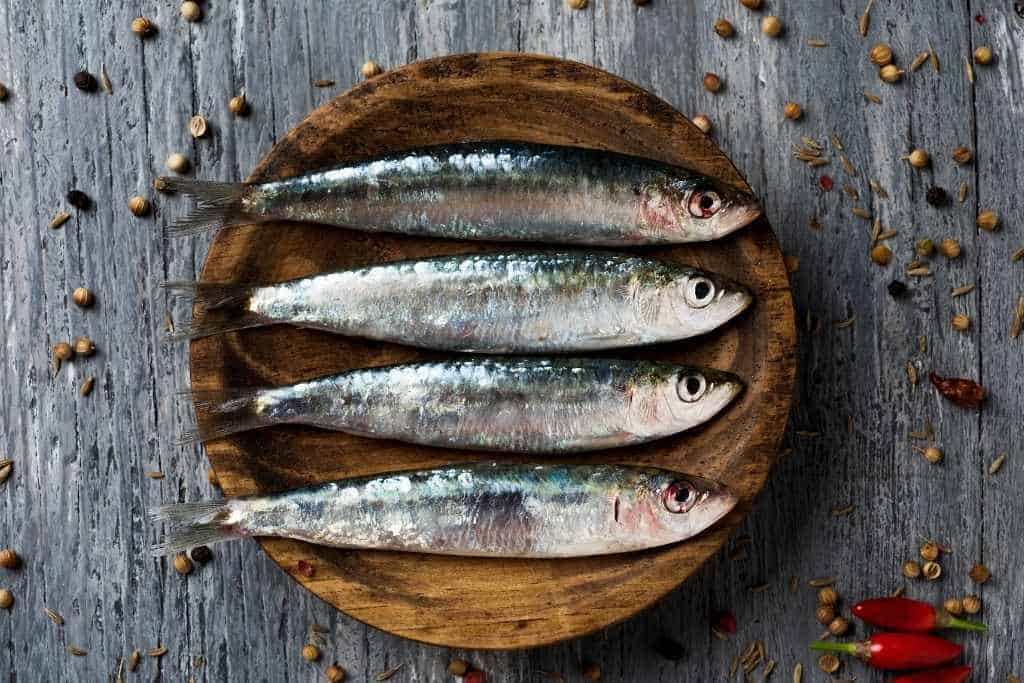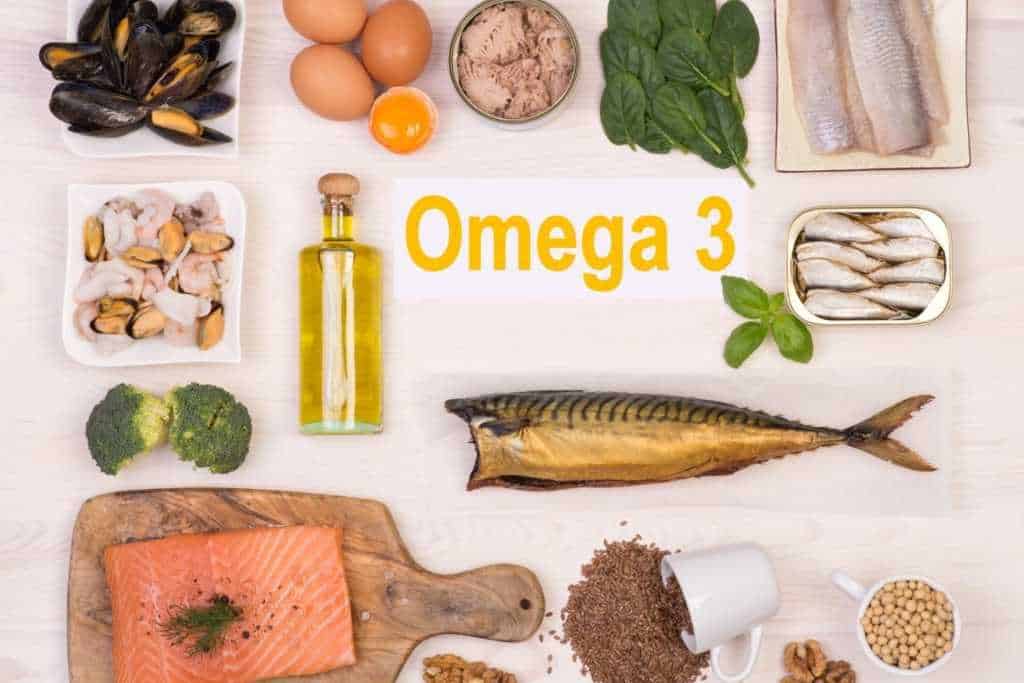Sprats vs Sardines – Are They Different? Let’s Compare
Sprats and sardines are both popular canned fish with many similarities. For this reason many people wonder about their differences. Let’s answer the question, are sardines and sprats different?
Sprats and sardines are different species although from the same family. Sardines are longer, weigh more and live longer than sprats. Sprats have a stronger and meatier taste than the fishier sardine. Sardines provide a higher percentage of B vitamins and minerals than sprats.
This article will compare their tastes, textures, cooking methods, costs, mercury levels and whether one can substitute for the other in recipes. In addition, I’ll do a side-by-side comparison of their nutrients, habitats, size, weight and more.
For the comparison below I’ll be comparing the European Sprat, aka brisling sardines (mostly canned for consumption in the United States) and the Atlantic sardine otherwise known as the European pilchard.

Sprats and Sardines Nutritional Value
For the nutrient comparison, the table below compares 4 ounces. The sprats and sardines are canned and packed in oil.
Both fish are extremely perishable, which is why it’s difficult to find them fresh. Almost everywhere, you’ll find them canned which is why I compare the canned varieties.
| Nutrient | Sprats, raw
Canned, oil (4 Ounces) |
Sardines, raw
Canned, oil (4 Ounces) |
| Calories | 411 | 236 |
| Fat | 37 g | 13 g |
| Saturated Fat | 5.7 g | 1.7 g |
| Cholesterol | 121 mg | 161 mg |
| Protein | 20 g | 28 g |
| Sodium | 524 mg | 348 mg |
| Omega-3 | 2.48 g | 1.65 g |
| B-6 | 0.2 mg | 0.1 mg |
| B-12 | 10.5 mcg | 10.1 mcg |
| Thiamin | 0.08 mg | 0.09 mg |
| Riboflavin | 0.24 mg | 0.25 mg |
| B5 | 0.6 mg | 0.7 mg |
| Iron | 5.5 mg | 3.3 mg |
| Niacin | 4.5 mg | 5.9 mg |
| Folate | 11.2 mcg | 11.3 mcg |
| Potassium | 430 mg | 450 mg |
| Magnesium | 41 mg | 44 mg |
| Phosphorus | 285 mg | 555 mg |
| Calcium | 185.0 mg | 433.1 mg |
| Zinc | 1.2 mg | 1.4 mg |
| Selenium | 47.2 mcg | 59.7 mcg |
Both fish contain a good number of minerals and vitamins. At first glance it’s difficult to determine which one provides more. Therefore, let’s examine which one is healthier.
Sardines are healthier than sprats due to fewer calories, total fat, saturated fat and sodium. Sardines provide a higher percentage of protein, B vitamins and minerals. They contain more thiamin, riboflavin, B5, niacin, folate, potassium, magnesium, phosphorus, calcium, zinc and selenium.
Sprats are also healthy and provide the same vitamins and minerals, just a little less. They contain a higher percentage of omega-3 fatty acids, B6, B12 and iron.
Canned types contain a large amount of sodium. Just one serving of sprats is almost have of what is recommended for the whole day. If you wish to remove some of the sodium of either fish, follow the steps in the next section.

How To Remove Sodium From Sprats or Sardines
Although canned contains more sodium, the fish can be soaked to remove some of the sodium.
How to remove excess sodium from canned fish:
- Remove from the can and rinse under cool running water.
- Place the fish into a shallow bowl.
- Pour milk or water over the fish until completely covered.
- Wait twenty minutes and then remove the liquid.
- Carefully pat the fish with a paper towel.
- Cover the fish again with liquid.
- Wait twenty minutes and remove the fish from the liquid.
- Rinse each fillet under cool running water.
- Allow the fillets to dry on a paper towel.
Both fish contain a high percentage of omega-3 fatty acids but sprats contain more. It’s one of the reasons why their fat content is higher, which is not always a bad thing. To find out why omega-3s are important, keep reading the next section below about health benefits.
Sprat and Sardine Health Benefits
Both fish provide the same nutrients and therefore the same benefits. Although I broke down the benefits by which fish offers the higher percentage of each nutrient ((FDA: Seafood Nutrition Facts)).
Sprat Health Benefits
Omega 3 Fatty Acids
Eat sprats which contain approximately 50% more which leads to the question, why does omega-3 fatty acids matter so much?
Omega-3 fatty acids are important because they are heart healthy and help keep arteries healthy. The omega-3s may help with the following:
- Keeping bad cholesterol low.
- Keeping good cholesterol high.
- Reducing inflammation.
- Reducing plaque build-up.
- Lowering triglycerides
- Help keep the heart rhythms more normal.
DHA and EPA, two of the fatty acids, are associated with lowering blood pressure and improving the health of blood vessels ((National Center for Biotechnology: Marine Omega-3 Supplementation and Cardiovascular Disease)).
Studies suggest omega-3s can help reduce joint pain and stiffness in people with rheumatoid arthritis. They may also boost the effectiveness of anti-inflammatory drugs.

Which has more health benefits, anchovies or sardines? Find out in my article, Anchovies vs Sardines: What’s The Difference? Let’s Compare.
Sardine Health Benefits
Potassium
Since the recommended daily amount is 4,700 mg, both provide an excellent number, almost 10%.
Potassium is beneficial for reducing sodium intake. It helps the body reduce fluids and rids excess sodium ((American Heart Association: How Potassium Can Help Control High Blood Pressure)). This process helps to reduce blood pressure.
The more potassium you consume, the more sodium your body will lose. Consuming too much sodium or not enough potassium throws off the delicate balance the kidneys need to remove the excess water5.
According to Harvard Health, a number of studies have shown a connection between low potassium levels and increased blood pressure6.
Selenium
Selenium is an underreported nutrient. I’m unsure why many don’t write about it more because studies7 show selenium may help to protect the following:
- Heart disease
- Thyroid
- The immune system
- Cognitive issues
Phosphorus
Phosphorus has been shown in studies to may help the following:
- Muscle recovery.
- Muscle contraction during exercise.
- Help the kidneys remove waste.
- Promoting healthy nerve conduction.
- Promote bone and teeth strength.
- Help the body manage and store energy.
B Vitamins
Of the seven B vitamins listed in the table above, sardines provides more than five of them. The B vitamins in the table include B6, B12, B5, B1 (thiamin), B2 (riboflavin), B3 (niacin) and B9 (folate). B vitamins help support the following:
- Cardiovascular disease
- Digestion
- Red blood cells
- Energy levels
- Brain function
- Nerve function
Magnesium
Magnesium helps keep blood pressure levels balanced and stable. A recent study researched 22 studies and concluded magnesium supplementation decreased diastolic and systolic blood pressure8.
Adding magnesium to your diet could be instrumental in improving sleep related issues like insomnia. Magnesium relaxes and calms the whole body including the blood vessels ((National Institutes of Health: Magnesium)).
Magnesium helps control muscle and nerve function, blood sugar and blood pressure. In the muscles and heart, magnesium competes with calcium to help the muscles relax after contracting.
When the body is low in magnesium, calcium can over stimulate the heart muscle’s cells causing a rapid or irregular heartbeat.
Calcium
Calcium is important for blood pressure and the heart.
Harvard Health reports calcium helps maintain blood pressure because it helps to control the relaxing and tightening of blood vessels9. Calcium also helps the following:
- Build and maintain strong bones.
- Improve the function of the nerves.
- Muscles need calcium to function properly.
Sardines and Sprats Taste and Texture
One of the most important things people takes into consideration when choosing a fish is its taste. Let’s compare the taste of each one.
Sprats have a stronger, more intense flavor than sardines. Sardines have a fishier flavor than sprats, especially when the sprats are smoked. Sprats are oilier due to their higher fat content. If a strong taste is desired sprats is better than the milder sardines. Sardines have a meatier texture compared to grainy sprats.
Sprats taste salty but not as much as anchovies. They have a strong, meaty flavor. Their texture is soft and grainy.
Sardines have a fishy and salty taste. They are oily especially if they are packed in oil. They do not flake as much and are meaty and dense when biting into them.
I conducted original research for taste by polling my readers, clients and members of food groups. I asked them, which canned fish, sprats vs sardines, tastes better?
- 56% said they preferred sardines.
- 44% said they preferred sprats.
To conduct more research I set up a blind taste test at home. Three out of four people chose the sardines.
If you’re wondering how they and salmon differ, check out my article, Salmon: A Complete Comparison.
Sprats and Sardine Substitutions
When preparing recipes for dinner it’s not always possible to locate the type of fish called for. If you have some only one, you may wonder if you can substitute one for the other.
Sardines and sprats can substitute for each other especially when the sprats are unsmoked. If substituting sprats remove some of the excess sodium to even the salty taste making it more similar to sardines. Similar cooking methods may be used like grilling, frying and baking.
The best sardines sprats substitutes include the following:
- Herring
- Anchovies (although saltier and stronger)
- Mackerel
- Smelts
When substituting one fish for the other try to stick to the following:
- Same size and weight.
- Stick with similar fillets, whole fillet or cross section.
- Stick with skinless or skin when the recipe calls for one.
- Texture is more important for certain cooking methods. Like using a firmer texture when grilling10.
Eat Sardines with Olive Oil
Most people associate sardines coming from a can, but they are good fresh if you can find them. Either way, scale and gut the fish, coat them with olive oil and grill them. The best way to grill them is over wood or charcoal.
Another option is splitting them and pan frying or stuffed and baked. Avoid using them in stews or soups due to their bones and oily content.
Some people love consuming them with wine, sherry and rose.
Flavor pairings:
- Olive oil
- Herbs
- Beer batter
- Wasabi mayonnaise

Eat Sprats
If eating them straight out of the can, try the following:
- Mix mashed sprats into a hot pasta dish.
- They are great served on top of bread like rye bread. Add some sliced hard boiled eggs and lettuce.
If cooking them:
- Sprats may be added to a stew with vegetables and chopped tomatoes.
- Grill and flavor them with lemon juice and black pepper.
- Bake and season them with fresh lime and all purpose seasonings.
- Fry them using flour, lemon juice, black pepper and smoked paprika.
Mercury Levels
The EPA and the FDA have issued mercury level warnings and suggestions11. This is especially important for pregnant women, young infants and developing children.
They established a list of best fish, good choices and ones to avoid based on their mercury levels. Therefore, let’s take a look at their mercury levels.
Sprats and sardines have similar levels of mercury. They are both listed on the FDA’s best choices of fish to consume regarding their mercury levels.
Always check with a physician prior to eating new foods or changing your dietary habits.

Costs
When purchasing any fish, be sure to check the label to see if it is wild-caught, farm raised, smoked or marinated. Let’s take a close look at the prices of each one.
Canned sprats and sardines in oil cost the same price. The average cost for canned sardines is 0.61¢ per ounce while the average cost for canned sprats in oil is 0.61¢ per ounce.
I conducted original research on costs by checking the prices in various different stores.
First, I checked my local Shoprite supermarket and found the following prices:
- Wild canned sardines in olive oil (skinless and boneless)
- 0.66¢ per ounce
I checked online at Citarella and found the following prices:
- Fresh sardines
- $16.99 per pound
Unable to find sprats, I then checked Amazon and found a wide variety there.
- Sprats in oil
- 0.64¢ per ounce
- Smoked sprats in oil
- 0.59¢ per ounce
- Sardines in oil
- 0.71¢ per ounce
- Sardines in oil
- 0.52¢ per ounce
Sprats vs Sardines: Habitats, Size, Weight, Appearance?
Are sprats a type of sardine?
Sprats and sardines are not the same, they are two different species of fish. The average sardine is longer and weighs more than a sprat. Sprats have a greenish back with silver to gray sides while sardines have an olive to greenish color back and more silvery sides. Sprats live 6 years and sardines 10-12 years.
For the comparison below I’ll be comparing European sprats compared to the Atlantic sardine otherwise known as the European pilchards (both the most commonly found canned in the U.S.).
Check out the differences and details compared to herring in my article Herring – What’s The Difference? Let’s Compare.
Scientific Classifications, Families, Species
European Sprats are from:
- Family: Clupeidae
- Genus: Sprattus
- Species: S. sprattus
There are five species of sprat belonging to the genus sprattus and the Clupeidae family:
- European sprat
- New Zealand blueback sprat
- Falkland sprat
- New Zealand sprat
- Australian sprat
Sardines are from:
- Family: Clupeidae
- Genus: Sardina
- Species: S. pilchardus
Habitats
- The sprat is found in European waters including the Black Sea, Irish Sea, Baltic Sea and Sea of the Hebrides.
- Sardines are found in the northeastern Atlantic Ocean, Mediterranean Sea and the Black Sea.
Colors
- Sprats have a silver to gray coloring on the sides and bottom and a faint green to blueish back.
- Sardines are silvery in color with a greenish to olive colored back.
Appearance
- Sprat’s body is long and slender having a forked tail and one dorsal fin.
- Sardines are an elongated, small fish like the herring. They have one dorsal fin.
Size and Weight
- Sprats can grow up to 6″ long but average 3-5″ and weigh 0.4-0.7 ounces.
- Sardines grow up to 8-10″ long and weight from 0.33 to half a pound.
Sprats are smaller in size compared to sardines.
Age
- Sprats lives up to 6 years.
- Sardines live up to 10-12 years.
As a Certified Health Coach, many of my clients inquire about seafood. In addition to coaching clients about sprats and sardines, I’ve purchased, researched and consumed both fish for over 20 years.
If you have any questions about this article, another key point or view, don’t hesitate to email and notify us. You can find an email on our contact page. We’ll do our best to reply as soon as possible.
FAQ
What are brisling sardines?
In Europe brisling sardines are called sprats. They are smaller than other sardines and have a mild flavor and delicate texture. They are silver and have no noticeable scales.
Read Next – More Fish vs Fish Articles!
Tuna vs Mahi Mahi – What’s The Difference? Let’s Compare
Rainbow Trout vs Cod: Which Is Better? Let’s Compare
Alaska Pollock vs Atlantic Pollock: Which Is Better?
White Bass vs Striped Bass: The Key Differences
- Nutrition Value: Sardines, canned in oil [↩]
- Nutrition Value: Smoked sprats in oil by Rigas Zelts [↩]
- Nutrition Value: Sprats in oil. by Amberfish [↩]
- FDA: Daily Value on the New Nutrition and Supplement Facts Labels [↩]
- National Center for Biotechnology Information: The Effect of the Sodium to Potassium Ratio on Hypertension Prevalence: A Propensity Score Matching Approach [↩]
- Harvard Health: Potassium lowers blood pressure [↩]
- National Institutes of Health: Selenium [↩]
- National Center for Biotechnology Information: Effect of magnesium supplementation on blood pressure: a meta-analysis [↩]
- Harvard Health: Key minerals to help control blood pressure [↩]
- Sea Grant North Carolina: Fish Flavors and Substitutions [↩]
- FDA: Advice about Eating Fish [↩]
